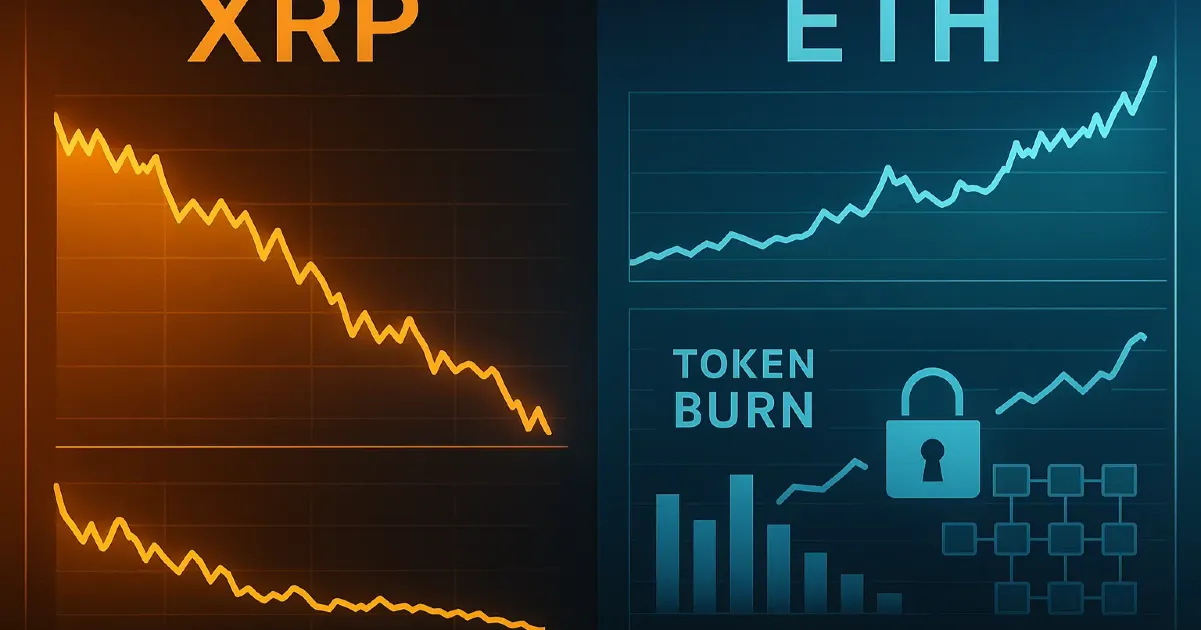Chainlink’s new compliance engine aims to slash TradFi costs and bring institutional capital on-chain. Could this be the tipping point for RWA adoption?
In the world of high finance, compliance is often the unsung villain quietly eating away at efficiency and profits. From Know Your Customer (KYC) requirements to anti-money laundering (AML) checks, financial institutions spend billions every year on slow, fragmented systems just to stay compliant. But what if blockchain could make this entire process not just faster, but 10x cheaper?
That’s the bold vision put forward by Sergey Nazarov, co-founder of Chainlink, during the Real World Asset (RWA) Summit 2025 in Cannes. According to Nazarov, the future of financial compliance doesn’t belong to bloated legacy systems. It belongs on the blockchain.
Why TradFi Compliance Is Broken
To understand the gravity of Chainlink’s proposal, we first need to grasp just how inefficient traditional finance compliance really is.
In 2023 alone, financial crime compliance costs in the U.S. and Canada exceeded $60 billion, according to a report by LexisNexis and Forrester Consulting. That’s not even including the lost opportunity cost—the deals that never happen or are delayed because of slow identity checks, inconsistent international rules, or overly manual vetting processes.
Financial compliance today is like trying to run a Formula 1 car with square wheels. Everything takes longer than it should, errors are common, and even small frictions result in billions of dollars lost annually.
KYC and AML requirements, for instance, often involve juggling between outdated databases, human verification teams, and third-party tools that don’t talk to each other. The entire ecosystem is built on a patchwork of legacy software that was never designed for scale or global interoperability.
Now, Chainlink wants to fix that.
Enter Chainlink ACE: The Automated Compliance Engine
On June 30, Chainlink unveiled its most ambitious infrastructure product yet: the Automated Compliance Engine (ACE). Still in early-access testing with a group of select institutions, ACE promises to do for compliance what Stripe did for payments: standardize, simplify, and radically streamline it.
The idea is simple in theory but revolutionary in execution: build a modular framework for regulatory compliance that works seamlessly across both traditional finance and DeFi protocols.
Rather than reinventing the wheel for every jurisdiction, ACE creates a plug-and-play compliance layer. Whether it’s a hedge fund tokenizing real estate or a DeFi protocol offering permissioned lending, ACE would automatically ensure all KYC, AML, and other legal requirements are met without slowing things down.
According to Chainlink, ACE has the potential to unlock $100 trillion in institutional capital currently sitting on the sidelines, blocked by the regulatory fog that makes on-chain participation unappealing to traditional players.
Sergey Nazarov: Blockchain Will Beat TradFi at Its Own Game
Speaking to Cointelegraph during the RWA Summit, Nazarov laid out his thesis in blunt terms:
“Compliance is an inefficient part of the traditional finance industry that a lot of people are not happy about. If you compare what it costs and how complicated it is to make a compliant transaction in TradFi, our industry should be able to do it ten times faster and cheaper.”
For Nazarov, the inefficiency isn’t just a bottleneck; it’s a market opportunity. By solving this structural weakness, blockchain can leapfrog legacy systems and finally attract the wave of institutional capital the crypto world has been dreaming about for years.
The friction around compliance is, in his view, the final hurdle to mass adoption.
Tokenized Real-World Assets and the Compliance Bottleneck
Real-world asset (RWA) tokenization—bringing traditional assets like real estate, bonds, or equities on-chain—is one of the hottest trends in finance. BlackRock, Franklin Templeton, and Citigroup are already experimenting with tokenized funds and bonds.
But while the tech is ready, the compliance gap remains a major blocker.
If a pension fund wants to tokenize part of its bond portfolio and offer it on-chain, it doesn’t just need smart contracts. It needs robust, legally recognized frameworks for KYC, AML, investor accreditation, jurisdictional limits, and more.
Chainlink’s ACE could be the missing puzzle piece—the infrastructure layer that makes institutional-grade RWA issuance not just possible, but preferable.
Why This Moment Matters: A Convergence of Trends
Several macro trends make Chainlink’s compliance push especially timely:
- Institutional curiosity is peaking: From BlackRock to Fidelity, traditional players are no longer ignoring crypto. They’re actively building.
- Regulatory clarity is slowly emerging: In jurisdictions like the UAE, Singapore, and even the U.S. under the GENIUS Act, clear paths for compliant digital assets are being carved out.
- Tokenization is going mainstream: The IMF, BIS, and World Bank have all published papers in 2024–2025 highlighting tokenized assets as the next frontier for financial infrastructure.
Put simply, the industry is waiting for a trusted compliance framework that can bridge the old and the new. If ACE delivers, it could become the standard rails that underwrite this next phase of growth.
Cost Efficiency: The Real Game-Changer
Let’s talk numbers.
According to Nazarov, blockchain-based compliance solutions could reduce the cost of compliance processes by 5x to 10x. That’s not just incremental; it’s transformative.
Why? Because in finance, cost structure defines competitiveness.
If it’s ten times cheaper for a European bank to issue a tokenized bond with built-in compliance vs. using their traditional custodian and legal frameworks, they will eventually make the switch, not for ideological reasons, but economic ones.
Lower compliance costs also mean new markets open up. Micro-financing, cross-border lending, and niche investment products become viable when costs are no longer prohibitive.
Challenges Ahead: Regulation, Adoption, and Trust
Of course, no new infrastructure comes without hurdles.
Chainlink’s ACE will need to gain regulatory acceptance across multiple jurisdictions. It must win the trust of legacy players who have built their businesses around centralized gatekeeping. And it must prove it can scale without breaking, especially when billions are on the line.
There’s also the question of transparency. As compliance becomes modular and code-based, how can institutions ensure the logic is legally enforceable and up to date with evolving laws?
Chainlink may need to partner with regulators and legal tech platforms to make ACE auditable and certifiable—a necessary step for full institutional buy-in.
Looking Ahead: A Blockchain Future Institutions Can Trust
Despite the challenges, the writing is on the wall.
The future of finance will not be built on Excel spreadsheets and PDF documents emailed between compliance teams. It will be programmatic, interoperable, and lightning-fast. Blockchain-native compliance frameworks like ACE are not just better; they’re inevitable.
Nazarov’s message is simple: let’s stop asking institutions to bend to blockchain. Let’s meet them halfway with tools that respect their constraints while unlocking the full power of decentralization.
If Chainlink succeeds in building the ACE framework into the bedrock of RWA tokenization and institutional DeFi, it won’t just be another protocol; it could be the compliance engine of the next financial era.
About the Author
Dan






